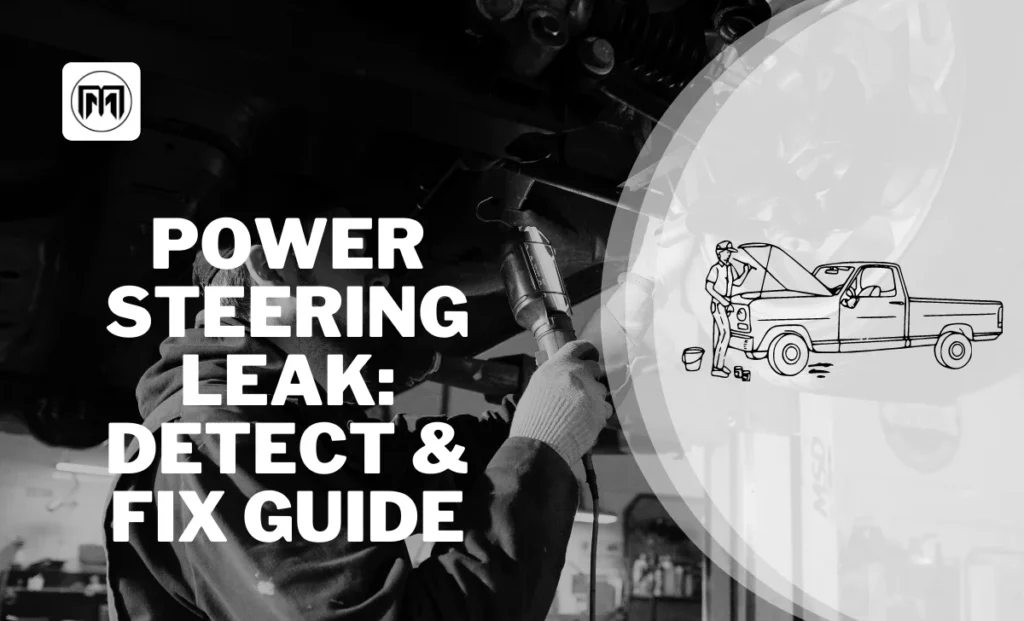In the world of modern automobiles, power steering plays a pivotal role, granting drivers effortless control over their vehicles’ steering. Alas, like any mechanical system, power steering is not invulnerable and can succumb to wear and tear over time. One of the most prevalent issues that arise is power steering leaks. But fear not! By promptly detecting and addressing these leaks, you can spare yourself from costly repairs and maintain optimal performance. In this article, we will delve into the key aspects of power steering leaks, including their symptoms, detection methods, and step-by-step repair processes. So, let’s gear up and dive into this comprehensive guide!
Read the – Best Car Buying Apps to Simplify Your Search
CONTENTS
Understanding Power Steering Leaks
Before we delve into the detection and repair, it’s essential to understand what power steering leaks are and their potential consequences. Power steering systems utilize a hydraulic mechanism to assist in turning the wheels, and leaks occur when there is a loss of hydraulic fluid. The hydraulic fluid, also known as power steering fluid, is essential for maintaining smooth and effortless steering.
Power steering leaks can manifest in different forms, and the common components involved are:
- Power Steering Pump: Responsible for pressurizing the fluid and supplying it to the steering gear.
- Power Steering Gear: Transfers the hydraulic force from the power steering pump to the steering linkage.
- Hoses: Connect the power steering pump to the steering gear and facilitate fluid flow.
- Hydraulic Lines: Additional lines that may carry fluid to various components.
Identifying Symptoms of Power Steering Leaks
Detecting power steering leaks early is crucial to preventing further damage and safety hazards. Here are some common symptoms to look out for:
- Steering Wheel Difficulty: If the steering wheel becomes stiff or requires extra effort to turn, it may indicate a power steering leak.
- Whining or Squealing Noises: Unusual noises while turning the wheel might signal low power steering fluid levels due to a leak.
- Fluid Puddles: Observe your vehicle’s usual parking spot for any fluid puddles, which could be a sign of a leak.
- Low Power Steering Fluid Levels: Regularly check the power steering fluid reservoir to ensure it is within the recommended levels.
Diagnosing Power Steering Leaks
Once you’ve observed the symptoms, the next step is to diagnose the source of the leak. It’s essential to identify the problematic component correctly to avoid unnecessary repairs. Here’s a systematic approach to diagnosing power steering leaks:
- Visual Inspection: Start by inspecting the power steering system, including the pump, hoses, and steering gear. Look for any signs of fluid leakage or wet patches.
- Clean the System: Before conducting a more thorough inspection, clean the power steering system to remove any accumulated dirt and grime. This will make it easier to pinpoint the source of the leak.
- Leak Detection Agent: Utilize a specialized leak detection agent or UV dye designed for power steering systems. Add the dye to the power steering fluid reservoir and run the engine for a short time. The dye will escape with the leaking fluid and glow under ultraviolet light, making it easier to identify the source.
- Use Diagnostic Tools: If necessary, employ diagnostic tools to pressurize the power steering system and find hidden leaks.
Repairing Power Steering Leaks
Once you’ve identified the source of the power steering leak, it’s time to proceed with the repair. The complexity of the repair process may vary depending on the component involved. Here’s a step-by-step guide for common power steering leak repairs:
- Replacing Hoses and Lines: If the leak stems from a damaged hose or line, start by draining the power steering fluid reservoir and disconnecting the affected component. Replace the damaged part with a new one and secure all connections tightly.
- Power Steering Pump Replacement: Drain the fluid and separate the power steering pump from the rest of the system if the pump itself is leaking. Install the replacement pump, making sure it is compatible with the make and model of your car.
- Fixing Power Steering Gear Leaks: Repairing a leak in the power steering gear is more intricate and might require professional expertise. In some cases, it may be more cost-effective to replace the entire power steering gear.
- Seal and Gasket Replacement: Often, leaks occur due to worn-out seals or gaskets. Replace these components carefully, ensuring a proper fit.
Power Steering Maintenance and Preventive Measures
Prevention is always better than cure, and this holds true for power steering leaks as well. To maintain a healthy power steering system and prevent future leaks, follow these maintenance tips:
- Regularly Check Fluid Levels: Keep a close eye on the power steering fluid levels and top-up as needed with the recommended fluid type.
- Fluid Flush: Periodically, perform a power steering fluid flush to remove any contaminants and extend the system’s lifespan.
- Inspect for Damaged Components: Routinely inspect hoses, lines, seals, and gaskets for signs of wear and tear, and replace them promptly if necessary.
- Avoid Overloading: Avoid putting excessive strain on the power steering system, especially during tight turns or when the vehicle is stationary.
If you get more detail about the power steering leak – Click here
Conclusion
Power steering that works properly is vital for a safe and comfortable driving experience. Early detection and treatment of power steering leaks might help to avoid further damage and costly repairs. Regular maintenance and close attention may extend the life and effectiveness of your vehicle’s power steering system. If you’re unclear on how to diagnose or repair power steering leaks, see a certified technician or a professional automobile service shop. Drive cautiously and periodically improve your power steering system to ensure smooth and trouble-free travel.



